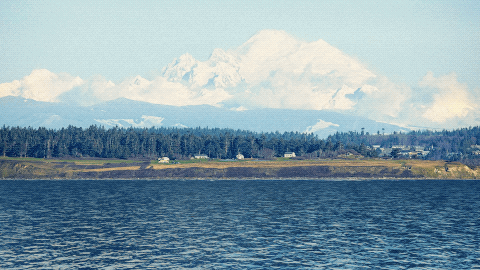Simulates the distortion created when looking through the surface of a volume of water. In this example, the water’s surface is entirely generated using Caustics.

This effect can also be used to simulate the natural movement of a liquid surface. The Bottom Texture allows you to select another layer whose contents will be used as the floor beneath the water. The Height Map controls the shape and movement of the waves on the water’s surface. The Environment Map handles the reflections on the water’s surface.
- Depth: Sets the depth of the water simulation. Greater depth values increase the distortion created by the effect.
- Refractive Index: Controls how light is refracted through the volume of he water simulation. 1.33 is the refractive index for water. If you wish to simulate other materials, you can change the refractive index used.
Bottom Texture
- Layer: Choose a layer that will be used as the image of the floor below the water volume. This can be an image, a video, or a composite shot.
Height Map
The height map is used to create the water’s surface. Luminance values are translated into a height map, with black areas being highest, and white areas being lowest.
- Layer: Choose any layer on the timeline to use its contents as the height map.
- Wave Height: Sets the range between the highest and lowest points.
- Invert Map: Inverts the values, so white areas are highest, and black areas are lowest.
Surface Texture
- Layer: Chose any layer on the timeline to be used as the surface of the caustics effect.
Illumination
- Type: Select what lights will be used to illuminate the caustics effect.
- Comp Lights: The caustics will be illuminated by entire lighting setup that is present on the timeline.
- Selected Lights: Allows you to choose specific lights which will be applied to the caustics, while unselected lights will have no effect.
- Material: Control how the caustics will respond to lights.
- Ambient: Sets the intensity to which any Ambient light layers will affect the caustics.
- Diffuse: Sets the intensity to which any Point, Directional, or Spot light layers will affect the caustics.
- Specular: Adjusts the strength of specular highlights when illuminated by point, directional and spot lights. A low specular value will create a more matte surface.
- Shininess: Adjusts the size of the specular highlight. A low shininess creates a large, diffuse highlight while a high value creates a smaller, defined highlight.
Environment Map
Setting up an environment map to control the reflections on the water’s surface is a key part of the caustics effect. The selected layer will be mapped onto a spherical surface which surrounds the caustics effect, and reflections will be created based on that. The sphere itself is not visible, it is only used internally to generate the reflections.
- Layer: Choose the layer whose contents will be reflected onto the caustics surface.
- Pre-blur: Blurs the detail of the selected layer within the created reflections. It is often useful to turn off the pre-blur while setting the position of the reflection, then adjust the amount of pre-blur after the position is correct.
- Amount: Sets the overall intensity of the environment map reflections.
- Angle Dependency: Controls the balance of the reflection colors and the illumination color in specular areas of the caustic surface.
- Texture Scale: Adjusts the scale of the reflected image.
- Texture Ratio: Adjusts the height of the reflected image without affecting its width, to control the aspect ratio of the reflections.
- Transform: Sets the position of the reflected image within the frame.
- X Rotation: Rotates the spherical map on the X axis.
- Y Rotation: Rotates the spherical map on the Y axis.
- Z Rotation: Rotates the spherical map on the Z axis.
